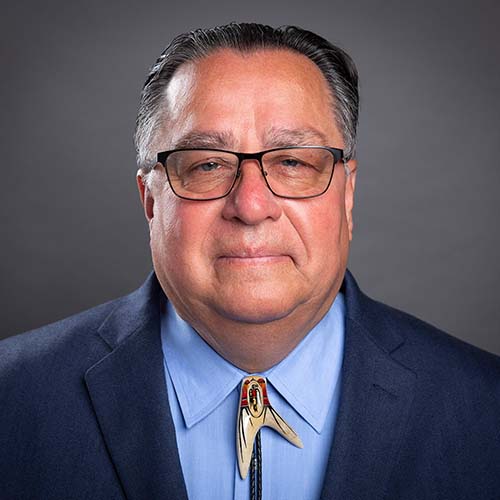
- Details
- By Native News Online Staff
The 25th Navajo Nation Council has launched a public website to serve as a central hub for food access information as the Nation responds to the federal government’s suspension of Supplemental Nutrition Assistance Program (SNAP) benefits.
The site, available at www.navajonationcouncil.org/supplemental-nutrition-assistance-program-snap, includes a directory of food bank and chapter distribution locations, guidance for households transitioning from SNAP to Navajo Nation food assistance programs, and contact details for immediate food support resources.
Speaker Crystalyne Curley and New Mexico Caucus Chair Amber Kanazbah Crotty convened an emergency coordination meeting Monday with the Navajo Nation Department of Health, the Division of Children and Family Services, and executive branch divisions and departments to address the growing food access crisis affecting Navajo families.
The meeting also included representatives from the State of New Mexico, the United Way of San Juan County, and partners from Arizona and Utah. Together, tribal and state leaders are developing a unified approach to ensure that food resources, emergency supplies, and nutritional assistance remain accessible across Navajo communities.
“The Navajo Nation is taking coordinated action to protect our people,” said Speaker Crystalyne Curley. “We are working closely with our partners across Arizona, New Mexico, and Utah to make sure food banks and local chapters have the resources necessary to assist our families, elders, and children. This is a time for leadership, compassion, and unity.”
Council Delegate Cherilyn Yazzie underscored the importance of collaboration across departments and agencies.
“Our families should never have to face hunger because of decisions made far from our Diné homelands,” Yazzie said. “We are working side by side with department heads, food banks, and state partners to make sure no one is left behind. This is not just about food—it’s about dignity, self-reliance, and protecting our people’s well-being.”
Crotty highlighted the growing partnerships between tribal and state entities.
“As the New Mexico Caucus Chair, I am encouraged by the strong partnerships emerging from this effort. Together, we are ensuring that our chapters and food banks work directly to distribute food, share accurate information, and support families transitioning from the federal SNAP program to the Navajo Nation’s Food Distribution Program,” she said.
The Navajo Nation Council, Office of the President and Vice President, and Executive Branch divisions and departments are working collectively through the Chiyáán Access Action Team, which is finalizing a comprehensive food access plan.
More Stories Like This
Native News Weekly (August 25, 2024): D.C. BriefsUS Presidents in Their Own Words Concerning American Indians
Oral History Project Announces 14th Stop in Portland, Oregon: NABS Continues to Gather Crucial Stories Across Indian Country
Next on Native Bidaské: Honoring Native Veterans: A Call to Action from Those Who Served
Help us tell the stories that could save Native languages and food traditions
At a critical moment for Indian Country, Native News Online is embarking on our most ambitious reporting project yet: "Cultivating Culture," a three-year investigation into two forces shaping Native community survival—food sovereignty and language revitalization.
The devastating impact of COVID-19 accelerated the loss of Native elders and with them, irreplaceable cultural knowledge. Yet across tribal communities, innovative leaders are fighting back, reclaiming traditional food systems and breathing new life into Native languages. These aren't just cultural preservation efforts—they're powerful pathways to community health, healing, and resilience.
Our dedicated reporting team will spend three years documenting these stories through on-the-ground reporting in 18 tribal communities, producing over 200 in-depth stories, 18 podcast episodes, and multimedia content that amplifies Indigenous voices. We'll show policymakers, funders, and allies how cultural restoration directly impacts physical and mental wellness while celebrating successful models of sovereignty and self-determination.
This isn't corporate media parachuting into Indian Country for a quick story. This is sustained, relationship-based journalism by Native reporters who understand these communities. It's "Warrior Journalism"—fearless reporting that serves the 5.5 million readers who depend on us for news that mainstream media often ignores.
We need your help right now. While we've secured partial funding, we're still $450,000 short of our three-year budget. Our immediate goal is $25,000 this month to keep this critical work moving forward—funding reporter salaries, travel to remote communities, photography, and the deep reporting these stories deserve.
Every dollar directly supports Indigenous journalists telling Indigenous stories. Whether it's $5 or $50, your contribution ensures these vital narratives of resilience, innovation, and hope don't disappear into silence.
 The stakes couldn't be higher. Native languages are being lost at an alarming rate. Food insecurity plagues many tribal communities. But solutions are emerging, and these stories need to be told.
The stakes couldn't be higher. Native languages are being lost at an alarming rate. Food insecurity plagues many tribal communities. But solutions are emerging, and these stories need to be told.
Support independent Native journalism. Fund the stories that matter.
Levi Rickert (Potawatomi), Editor & Publisher

